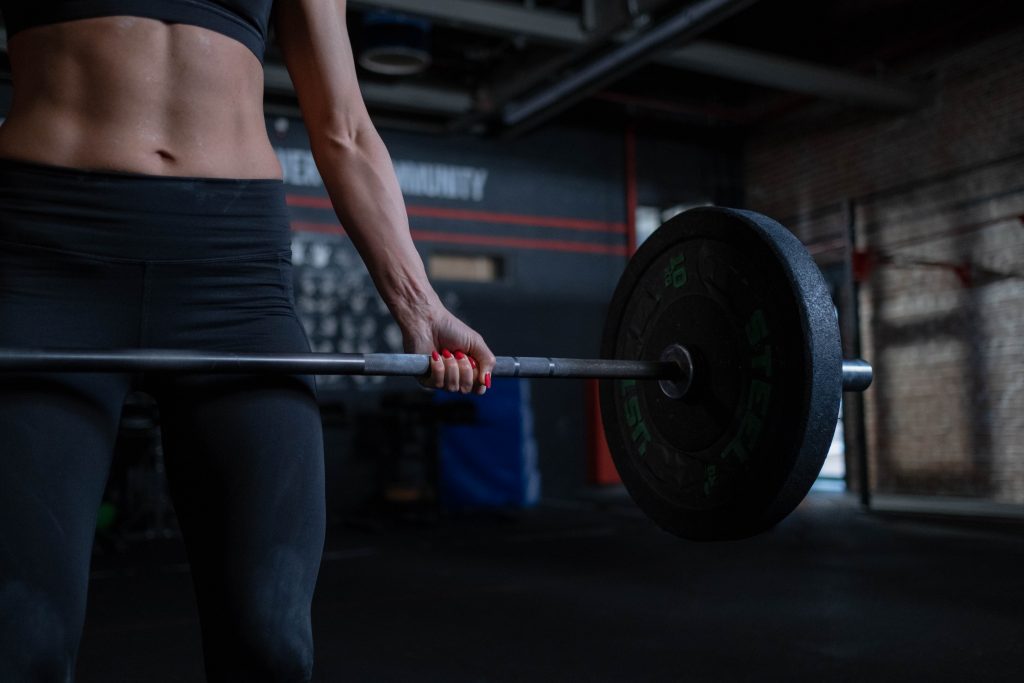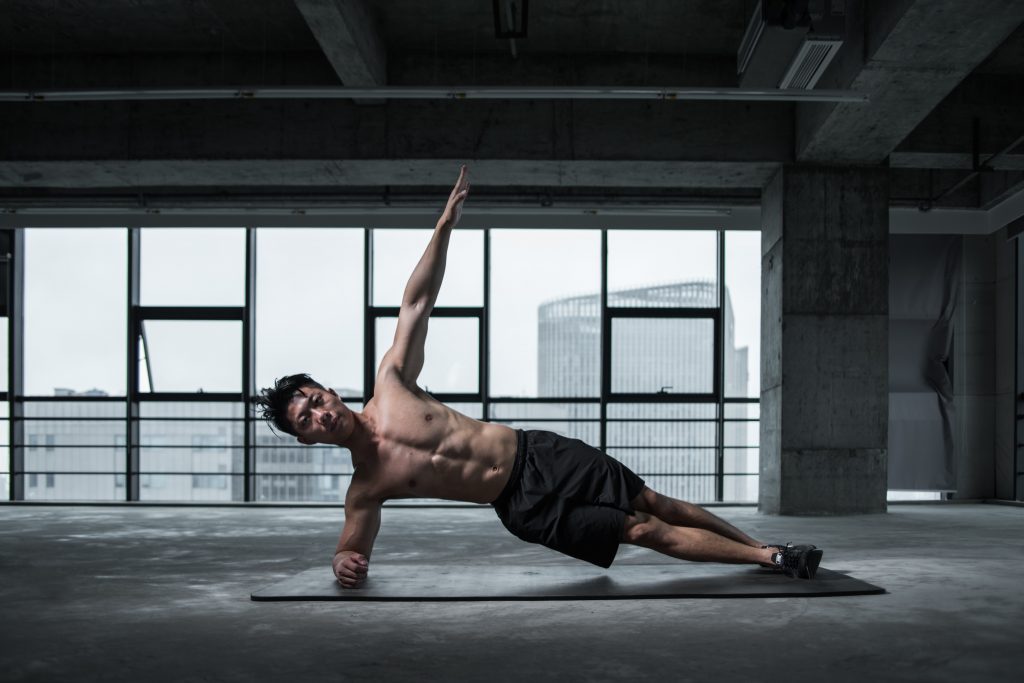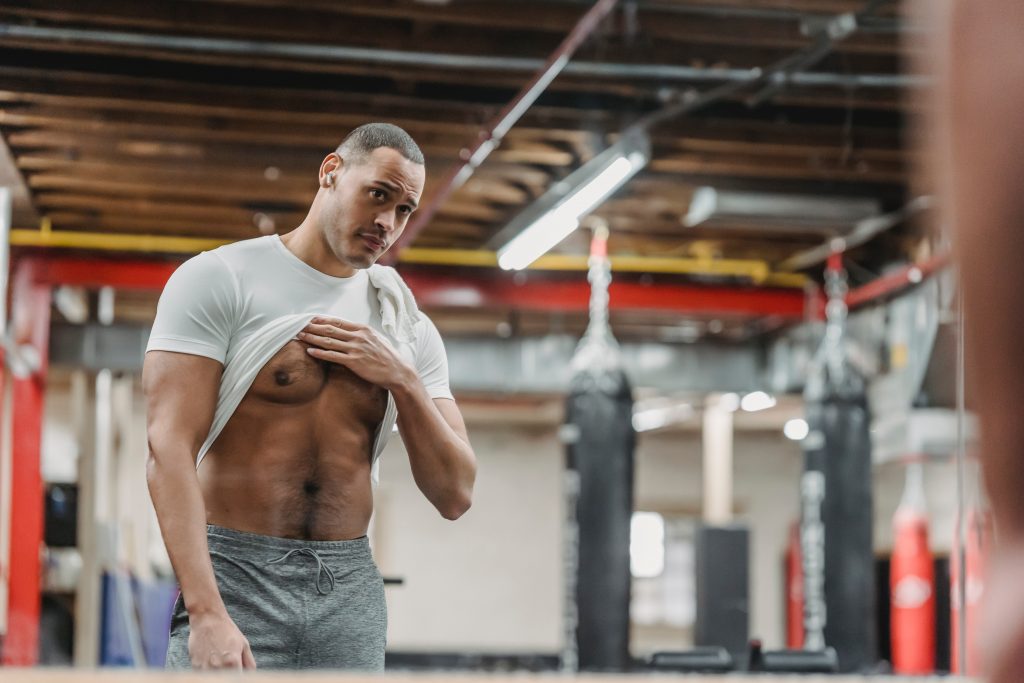Who doesn’t want a toned midsection with the defined abdominal muscles that tend to be a symbol of extreme health and fitness? The six-pack.
But having a defined six-pack that is visible all the time is no easy feat! This is not even something that you will see all professional athletes with. You may even notice that while many athletes have a six-pack when they are in peak form before a competition, it is not something that they sport all the time.
In fact, if you watch fighters, you may notice that they often have a six-pack at the weigh-in, but 24 hours when the fight arrives it seems to have disappeared. This is a result of the extreme weight that fighters lose for weigh-in, which is mostly water weight, which they then stack back on for the fight itself.
So, if professional athletes that need to be in shape for a living struggle to have a six-pack, how can you?
Getting and maintaining a six-pack is infinitely doable, but it is certainly hard work and an ongoing commitment as far as your fitness is concerned.
To build the muscles, you need to perform a combination of the right exercises (no crunches), that create mechanical tension, muscle damage, and metabolic stress.
To then reveal your six-pack, you need to get your body fat levels right down through a combination of the right diet, and the kind of cardio exercise the burns fat.
OK, but what does that mean? Let’s take a closer look at what exactly it takes to get your six pack.
Understanding Your Abdominals
Before getting started, let’s clarify exactly which muscles you need to build and strengthen to create your desired six-pack.
The abdominals are in fact a group of four major muscle groups.
- External abdominal obliques – located on the side and front of the abdomen.
- Rectus abdominis – located along the front of the abdomen, this is the most well-known abdominal and the most obvious part of the six pack.
- Transverse abdominis – located under the obliques, it is the deepest of the abdominal muscles and wraps around your spine for protection.
- Internal abdominal obliques – located under the external obliques running in the opposite direction.
While the rectus abdominis might be the most obvious part of the six-pack, you can’t just work this muscle group. If you do this, then your core can become unbalanced, with some muscles being stronger than others. This can leave you vulnerable to injury, especially in the transverse abdominis. While the injuries vary, it basically means back pain!

Building Your Abdominal Muscles
Many people think that doing a thousand crunches a day is the fastest way to build their abdominal muscles. But not only do crunches only work a limited portion of your abdominal muscle groups, crunches also don’t work the muscles in the right way to develop and grow them.
The key to developing any muscle group – legs, arms, or abdominals – is:
- Mechanical Tension
- Muscle Damage
- Metabolic Stress
Mechanical Tension
Mechanical tension is the theory behind “lifting heavy things”, as it requires working your muscles with a heavy load.
Mechanical tension is created when you lift heavy weights through a full range of motion.
But it is important that your muscles move through the “full range of motion” in order to gain maximum benefits, which is why it is important that you do your exercises with proper form.
It is also important that the weight that you are lifting gets progressively heavier over time as you get stronger. If you do not increase the weights, your body becomes accustomed to the task that it is being asked to complete, and you are no longer putting your muscles under the same tension.
It is also important to ensure that the exercises that you choose to do to generate mechanical tension involve both pushing and pulling motions.
Muscle Damage
When you work your muscles in the way described above, you are actually damaging your muscles, creating microtears in the muscle fibres. It is when these tears heal the muscles gain their strength and size.
But there are two types of muscle contraction that cause the required muscle damage: concentric and eccentric.
Concentric contractions occur when the muscle shortens, while eccentric contractions happen when the contracting muscle is elongating as it is contracting. So, on the most basic level, when you lift a barbell, you are using concentric contraction as you shorten the muscle to lift the weight. Then as you lower the weight you are making an eccentric contraction, as you extend the muscle under the tension of the weight.
Many people focus principally on concentric contractions and treat eccentric contractions like an afterthought. But this is a mistake, as eccentric contractions actually do more of the type of damage that you want and so can help you to see results faster.
Metabolic Stress
You can create metabolic stress by following a heavy lifting session with minimal reps with a session using lighter weights with greater repetition.
When you switch to this type of exercise, the continual contracting and relaxing of the muscles cause a blood pooling effect. This results in restricted blood flow to the muscle, which eventually leads to a level of hypoxia in the muscle.
While this might sound like a bad thing, it also results in a large build-up of metabolites, which has an anabolic effect on the muscles. The result is that hormones are released that encourage the body to build more muscle.

Best Abdominal Exercises
So, with these principles in mind, what are some of the best exercises that you can do to develop your full range of abdominal muscles?
Some of these exercises will use additional weight, but the majority will use your own body weight to create mechanical tension, as it can be difficult to secure weights properly while completing abdominal exercises.
V-Ups
Go beyond the sit-up to work your abdominal rectus with the V up. Lie flat on the ground with your legs extended and your hands extended above your head. Then use your core muscles to pull your body up into a V shape, touching your hands to your toes.
You’ll find that you can do many fewer reps than possible with standard sit-ups.
You can make it easier by bending your knees on the way up. Make it harder by keeping your legs perfectly straight. You can even supercharge the exercise by adding weights to your ankles.
Hanging Leg Raise
This exercise not only engages your abdominal muscles, but also your hip flexors, biceps, and smaller back muscles.
Hang from a pull-up bar, which will already require significant muscle tension, and then lift your legs into a pike position. Keep your shoulders in place, and don’t use any kipping action to help you lift the legs.
If you find this challenging on the arms and shoulders, you can find equipment that lets you place your weight along your forearms to do the lifts.
To make the exercise harder, and work more into your upper abdominals, try to lift your legs higher, above the like position, while maintaining form. You can also attach leg weight to your ankles to intensify the exercise.
Roll Out
You’ve seen those little contraptions that look like a unicycle, well they are one of the best pieces of kit that you can invest in for your abs.
The exercise is simple. Sit on your knees and grab the roller in your hands. Roll forward, straightening out your body and lowering your chest to the ground until you are in a kind of plank position, as close to the ground as you can hold it without touching the floor. Then roll back to the starting position.
This engages all the muscles along the front side of your core. If you want to make the exercise more challenging, replace the roller with a barbell and increase the weight over time. You will be pushing and pulling the weight as well as controlling your core.
Plank & Side Plank
While the plank is one of the simplest exercises for the abs, it is also one of the most effective.
For a standard plank, lie down on the ground and prop yourself up onto your forearms. Make sure that your elbows are aligned underneath your shoulders and that your hands are balled into fists. Hold the position for as long as you can.
While this can feel like an easy exercise, it is one that is as difficult as you choose to make it. Squeeze your entire body, your quads, glutes, core, back, and fists, to make the most of the exercise.
To work into your obliques, turn over for the side plank. Intensify this exercise by upgrading to the side plank row. As you hold the plank position with your lower arm, perform a cable row with your upper arm, increasing the weights that you pull as you grow stronger.
Landmine Anti-Rotation
On your feet, grab a barbell at one end, and let the other end remain resting on the floor. Stand with your feet shoulders width apart and do not move your hips! Now draw a half-moon shape with the bar, while bracing your entire body. Only your arms should be moving.
You will need to brace your abs to perform the exercise correctly and make sure that you exhale at the end of each rep.
You can add weight to the barbell to increase the intensity of the exercise over time.
Barbell Back Squat
This looks just like a normal squat, except that you centre the barbell across the back of your shoulders. Then when you squat, send your glutes more backward than you usually would, as though you are going to sit on a chair. Press through your heels to return.
Doing your weighted quats this way works your core rather than your legs, so you will want a lighter weight than you can lift with your legs. Start with just the barbell and then add weight over time.

Revealing Your Abdominals
Well, know that you are doing the hard work to develop your abdominal muscles, you also need to do the work to make sure that they are visible. You can have an extremely strong core and still not have a visible six-pack.
You also need to significantly cut your body fat, since even a healthy amount of body fat will make it difficult to see the definition of your abs.
While everyone is different, as a general rule, women need to cut their body fat to 14-19% in order for their abs to be visible, while men need to get down to 6-13%. The difference is down to hormones, which means that women need to carry a bit more fat.
How long it will take you to get down to this level of body fat depends on where you are starting from and how intensely you follow a weight loss plan, but it is generally considered healthy and sustainable to lose a maximum of 1-2% of body fat per month.
But losing the body fat is just the start, keeping it off is an ongoing challenge. When your body fat is low, under 10% for men and under 15% for women, your body will assume that it is starving, and it will work hard to get you to feed it so that it can regenerate its fat supplies.
We don’t say this to warn anyone off, just to point out that it is a serious lifestyle commitment to get and maintain a six-pack, so you have to decide if it is really something you are willing to do.
Creating A Calorie Deficit
Losing body fat is then all about creating a calorie deficit, which means eating meticulously, fat-burning cardio, and building muscle.
Eating Meticulously
The fact is that you can’t out-train a bad diet, so if you aren’t eating well, then you will struggle to do what you need to do to get the body that you want.
Exactly what dietary changes you need to make depend on you, your body, and what you want to achieve. It is worth consulting a nutritionist to discuss your personal case. While this can seem like an expensive indulgent, if you are serious about investing in your health and fitness, and you don’t already know what constitutes a good diet for you, it is worth doing.
But as a general rule, reduce your intake of complex carbohydrates, mainly found in things like white bread and normal pasta, and focus on the kind of starchy carbs that are in vegetables. Also, reduce your intake of added sugar.
Significantly up your protein intake, to around 2.2 grams of protein per kilogram of lean body mass. You can read our complete guide on getting enough protein here. You also might want to try a variety of other supplements that can help you lose weight and build muscle, such as BCAAs and Creatine.
Fat Burning Cardio
As well as eating fewer calories, you will want to burn more calories through cardio exercise. Just to be clear, cardio is any exercise that involves rhythmic or repetitive activity that raises your heart rate. So, it could be walking, running, dancing, martial arts, rowing, cycling, whatever.
During cardio, your heart rate becomes elevated as it works harder to send blood and oxygen to the muscles. This uses energy and burns calories, which helps you to create your calorie deficit.
But cardio also helps you burn fat. When you do exercises that use short bursts of energy, like lifting, your body tends to burn carbohydrates for energy. This helps with a calorie deficit, but not with burning stored fat. But for the more sustained energy exertion that you need for cardio, your body draws on fat cells for energy.
Completing 20-40 minutes of cardio 3-5 days a week is probably the best approach for fat burning. Avoid longer sessions as the repetitive motion can also be damaging to your body.
Just like with weighted exercise, you need to increase the intensity as your body becomes accustomed to the exercise or you lose the benefits. One way to avoid exponentially increasing the intensity forever is to mix up your cardio. Commit to running for a few weeks, then switch to swimming, then go for dance classes, then go back to running, and so forth, to keep your body guessing.
Read our complete guide on utilizing cardio for weight loss here.
Building Muscle
When you are doing nothing at all, your body is still using energy just to exist. Muscle needs more energy than fat to exist, so having more muscle means that your body burns more energy.
This is why building muscle is one of the fastest ways to lose fat, because it just means that your body is burning more calories all the time.
If you are working on your abdominal muscles, then you are already building muscle. But if you focus on building muscles across your entire body and not just working your core, you will burn calories faster, and also look good generally.
If you don’t have a particular goal to have killer pecks or build up the strength in your legs, then focus on full-body exercises that work multiple muscle groups. These include push-ups, burpees, deadlifts, squats, and lunges.
The Verdict
Getting the six-pack of your dreams is highly possible, but does require a big commitment in terms of cleaning up your diet, hitting the gym hard, and generally changing your lifestyle to be a fitter and leaner version of you.
If you are up for the challenge, hopefully our guide is full of useful information that will help you along the way.
References

